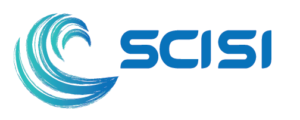10 Reasons to Love a Health Savings Account (HSA)
Many consumers are eager to learn more about health savings accounts, which continue to generate buzz as America’s newest option in health care coverage. The general assumption is that a financial tool with this much potential must be complex and difficult to understand. However, HSAs are simple to outline, and can be broken down into a list of ten basic points for consumers to easily digest.
- HSAs fund health care needs
The HSA is first and foremost designed to fund health care expenses in conjunction with a high deductible health plan (HDHP). An HDHP is a requirement to set up an HSA. The HSA is a savings account that secures pre-tax dollars in a fund for future medical needs, and helps meet the deductible on one’s health insurance plan, should something happen that takes medical expenses beyond what is readily affordable.
- HSAs utilize pre-tax funds
HSAs may be set up through employers or through financial institutions like banks, insurance companies, or third party administrators. Contributions to HSAs through employers are set up as pre-tax investments. HSA accounts created through financial institutions are designed so that consumers can take an “above-the-line” deduction on personal taxes. One asset for many is that taxable income is decreased, so fewer taxes need to be paid out.
- HSAs come with significant premium savings over traditional insurance plans High deductible health plans also come with much lower premiums than a traditional plan. This is especially apparent to someone who pays the premiums all year long but doesn’t actually go to the doctor or utilize medical services very often. For this person, the premium can feel like money out the window. Based on premium savings alone, some HSA consumers see 20% to 40% savings each year.
- HSAs offer expanded coverage options for consumers
Unlike typical insurance plans that have a highly-negotiated list of medical products or services that are covered, HSAs allow many additional health-related expenses. So doctors’ visits, hospital expenses, and prescriptions are covered, but coverage also extends to some over-the-counter drugs, dental and vision services, and certain “non-traditional” treatments such as acupuncture and deep tissue massage.
- HSAs allow negotiating power to secure discounts on medical services
Because an HSA is a “cash” account, it empowers consumers with an option to negotiate pricing on many medical services, which can lead to substantial savings on medical expenses. For example, standard imaging services can vary widely in price depending on location and payment method. An MRI, for example, can cost anywhere from $400 to $1800 for the exact same service.
- HSAs offer control and choices regarding health care needs
With these plans, consumers have unlimited choices regarding services, service providers, and medical expenditures. There are no provider or facility networks to stay within or pay the penalty like in traditional insurance plans. With an HSA, one can go to the doctor of his or her choice.
- HSAs are portable
If a consumer switches jobs, the HSA account follows. And, unlike traditional insurance plans, consumers do not lose unused funds in these accounts at the end of the year. The consumer “owns” this account and all benefits that come from its good management.
- HSAs create financial incentives for managing health care expenses
There are always unfortunate cases where a catastrophic event occurs and emergency medical services are required that do not allow time to “shop around.” But the majority of medical transactions faced in the course of a lifetime are really more mundane and more predictable. Since the HSA is a consumer-controlled cash account, that consumer is encouraged to think about whether a particular expense is really worth it or if a generic medication might work just as well.
- HSAs are a powerful tool for retirement investing
Over time, a relatively healthy person or someone who is a decent financial manager can save a good deal of money and investment earnings in an HSA. Consumers who are between the ages of 55 and 65 also have the opportunity to make additional “catch-up” contributions to the fund. Increased access to this fund begins at age 65. The account can continue to be used for medical expenses with no penalties, but withdrawals for other purposes are also possible (after age 65) and often face fewer penalties than withdrawals from an IRA.
- HSAs create a health-conscious community and put market forces to work that drive down health costs for everyone
Because of the incentive to save and earn money, consumers are encouraged to become educated on health care and medical services to become active participants in the control of their health and wellness. Providers of medical products and services are forced into a healthier competition for consumers. Additionally, there is a personal incentive to make smarter decisions about the use of the health care system, then decreasing the likelihood of its abuse. Overall, it becomes a more efficient system, and the costs of medical services decrease to meet the new market realities.
The HSA is an easily understood tool that offers consumers a very manageable way to take control of their health investments. It puts all of the financial incentives in the right place to encourage the consumer to make healthier lifestyle choices, better health care-related financial decisions, and to invest and save money over time for future medical needs. Consumer-driven health care has the power to change a family’s financial future while also catalyzing positive change in America’s health care system as a whole.
Presented by Sandy Coventry, RHU, Sandy Coventry Insurance Services, Inc.

